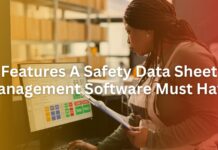Given the realm of cloud computing, Software as a Service (SaaS) has emerged as a cornerstone of modern business operations, offering unparalleled flexibility, scalability, and accessibility. However, as organizations increasingly rely on SaaS applications to power their workflows and drive productivity, the need for robust security measures has never been more critical. From its humble beginnings to its pivotal role in remote work and business operations in 2024, let’s delve into the history, meaning, processes, and importance of SaaS application security.
The Origins and Evolution
The concept of SaaS dates back to the 1960s when mainframe computers were used to provide centralized access to software applications via time-sharing systems. However, it wasn’t until the advent of the internet and advancements in cloud computing that SaaS truly came into its own. In the early 2000s, pioneering companies like Salesforce and Google introduced web-based applications delivered over the internet, laying the foundation for the SaaS revolution.
As SaaS adoption soared, security concerns emerged as a top priority for organizations entrusting their data and operations to third-party providers. In response, the SaaS industry has undergone a paradigm shift, with vendors investing heavily in security technologies, compliance frameworks, and best practices to protect customer data and mitigate cyber risks.
Understanding SaaS Application Security
SaaS application security encompasses a range of measures designed to protect data, applications, and infrastructure hosted in the cloud. It involves implementing robust authentication mechanisms, encryption protocols, access controls, and monitoring tools to safeguard against unauthorized access, data breaches, and cyber threats.
Key components of SaaS application security include
1. Authentication and Authorization: SaaS applications employ various authentication methods, such as username/password, multi-factor authentication (MFA), and single sign-on (SSO), to verify user identities and control access to sensitive data and functionalities.
2. Data Encryption: Sensitive data transmitted between users and SaaS applications is encrypted using secure protocols (e.g., SSL/TLS) to prevent eavesdropping and man-in-the-middle attacks. Data at rest is also encrypted to protect against unauthorized access and data theft.
3. Access Controls: Role-based access controls (RBAC) and granular permissions enable administrators to define user roles, privileges, and access levels based on job responsibilities and organizational policies. This helps enforce the principle of least privilege and reduce the risk of insider threats.
4. Security Monitoring and Incident Response: Today, safeguarding digital assets is more critical than ever. Implementing continuous attack surface management (CASM) enhances an organization’s ability to continuously monitor its SaaS applications and infrastructure. This approach allows for the real-time detection of suspicious activities, anomalies, and security incidents while automated alerts, SIEM systems, and well-prepared incident response plans work together to mitigate risks and minimize the impact of security breaches.
5. Compliance and Regulatory Frameworks: SaaS vendors adhere to industry standards and regulatory requirements, such as GDPR, HIPAA, and SOC 2, to ensure the security, privacy, and integrity of customer data. Regular audits, certifications, and compliance reports provide transparency and assurance to customers.
SaaS Importance in Remote Work and Business Operations in 2024
The COVID-19 pandemic has accelerated the adoption of remote work and digital collaboration, making SaaS applications indispensable tools for organizations navigating the transition to distributed workforces and virtual environments. In 2024, SaaS application security plays a pivotal role in enabling remote work and ensuring business continuity by:
1. Securing Remote Access: With employees accessing SaaS applications from various locations and devices, securing remote access is paramount to prevent unauthorized access, data leaks, and account compromise.
2. Protecting Confidential Data: SaaS applications host a treasure trove of sensitive information, including intellectual property, customer data, and financial records. Robust security measures are essential to safeguard this data from cyber threats and data breaches, particularly in remote work scenarios where data may be accessed from unsecured networks and personal devices.
3. Ensuring Compliance and Governance: Remote work introduces new compliance challenges, as organizations must navigate regulatory requirements across different jurisdictions and ensure data privacy and security standards are met. SaaS application security helps organizations maintain compliance with relevant regulations and industry standards, mitigating the risk of legal and financial repercussions.
4. Enabling Collaboration and Productivity: Despite the geographical distance, SaaS applications enable seamless collaboration, communication, and information sharing among remote teams. Secure access controls, encryption, and monitoring tools facilitate productive collaboration while protecting sensitive data from unauthorized access and data loss.
SaaS application security is a cornerstone of modern business operations. Cloudlytics enables organizations to embrace the benefits of cloud computing while safeguarding their data, applications, and infrastructure from cyber threats. As remote work and digital transformation continue to reshape the business landscape in 2024 and beyond, investing in robust SaaS application security measures will be essential to ensure resilience, compliance, and trust in the digital era.















